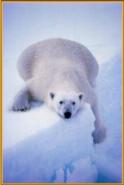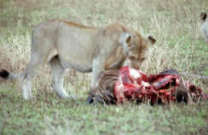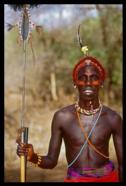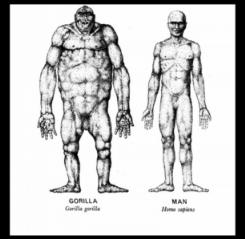Should all animals eat a high-fat, low-carb diet?
Part One: The Basis for a High-fat Diet
Consider cattle, sheep, horses, gorillas, rhinoceroses, koalas, all of which are herbivores eating grass and leaves; lions, wolves, polar bears, all of which are carnivores eating other animals; and humans. Before continuing, I want you to ask yourself:
Which of them in its natural habitat eats a high-fat, low-carb diet?

|

|

|

|

|

|
It's likely that you will classify the herbivores as low-fat dieters and the carnivores – particularly the polar bear – in the 'high-fat diet' class. But what about humans? Where do we fit? Those are the important questions today.
In 1997 the Journal of Nutrition published a study of the dietary intake of Western Lowland Gorillas, as the authors considered that the diet of one of our nearest 'cousins' could have implications for our (human) health.[1]
The Western Lowland Gorilla
The Western Lowland Gorilla eats leaves from around 200 species of plant. These foods are low in fat and available carbohydrate, varied in protein and very high in total dietary fibre. Macronutrients, in grams per 100 grams of dry matter, were found to be:
- Fat 0.5g (range 0.1 - 1.8)
- Available carbohydrate 7.7g (range 0 - 22.4)
- Protein 11.8g (range 1.7 - 30.0)
- Fibre made up by far the major part of the plants ranging between 52.0g and 96.5g for a mean of 74.0g.
Putting the available macronutrients in terms of calorific values we have:
- fat 5.9%
- available carbohydrate 37.1%
- protein 57.0%
On the face of it, therefore, it looks as if gorillas eat a very low-fat, high protein diet. But things aren't as clear cut as that.
No mammal — not even the herbivores — has developed an enzyme that will digest vegetable fibre. This is why we tend to discount it when calculating our calorie intakes. However, while mammals have not developed an enzyme that will digest fibre, there are lots of micro-organisms and bacteria that can the job for them. The herbivores employ billions of these bacteria.
Comparison between Man and gorilla
You will note in the picture on the right that there is a marked difference in shape between a human and a gorilla. But the gorilla's gut is not only much larger than a human's, it also has an entirely different design.
Human
- Small intestine is major organ used to extract nutrients.
- Small intestine ~ 50% of the total volume.
- Caecum and colon ~ 20% volume
Gorilla
- Ratios exactly the opposite
- Small intestine ~ 25% volume
- Caecum and colon ~ 53% volume.
This difference is highly significant. In a herbivore such as the gorilla, the caecum and colon harbour huge colonies of bacteria which ferment carbohydrates, particularly fibre, and use it to produce short chain fatty acids (SCFA) — principally acetic, proprionic and butyric acids. These are then absorbed into the body to be used as a source of energy.
If we look at the gorilla's diet, we now see that the authors of the study into the western lowland gorilla's diet find that the fibre provides some 2 kcals of energy per gram of fibre, in the form of SCFA. As the fibre averages about three-fourths of the gorilla's diet, this energy forms a highly significant proportion of the gorilla's total energy intake.
These SCFAs must be added to the fats already present in the gorilla's diet, which gives us the following proportions:
Overall energy
(kcal) per 100g %age
Protein 47.1 20.5%
Available carbs 30.6 13.1%
Fat 4.9 1.9%
SCFA from fibre 148.0 64.5%
This gives totals of:
- protein = 20.5%
- carbs = 13.1%
- fats = 66.4%
In other words, although the western lowland gorilla's diet, exclusively of leaves, looks like a very low-fat, carbohydrate-rich diet, it is actually a high-fat, moderate-protein, low-carb diet.
But what of other animals. We'll look at them in Part Two
Reference
1. Popovich DG, et al. The Western Lowland Gorilla Diet Has Implications for the Health of Humans and Other Hominoids. J Nutr 1997; 127: 2000-2005.
Last updated 7 July 2009
Related Articles

 HOME
HOME




